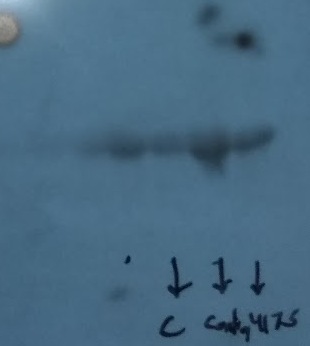Human E-Selectin/CD62E Antibody Summary
Applications
Please Note: Optimal dilutions should be determined by each laboratory for each application. General Protocols are available in the Technical Information section on our website.
Reconstitution Calculator
Preparation and Storage
- 12 months from date of receipt, -20 to -70 degreesC as supplied. 1 month, 2 to 8 degreesC under sterile conditions after reconstitution. 6 months, -20 to -70 degreesC under sterile conditions after reconstitution.
Background: E-Selectin/CD62E
E-Selectin (Endothelial Leukocyte Adhesion Molecule-1, ELAM-1, CD62E), a member of the Selectin family, is a 107 - 115 kDa cell surface glycoprotein. It is transiently expressed on vascular endothelial cells in response to IL-1 beta and TNF-alpha, and demonstrates peak expression at 4 hours, and decay at 24 hours, in response to activation. E-Selectin ligands, expressed on neutrophils, monocytes, and a subset of memory T-cells, are sialylated, fucosylated molecules which bind to the lectin domain of E-Selectin. Immunocytochemical techniques have demonstrated the expression of E-Selectin on healthy and diseased tissue. E-Selectin mediates the attachment of flowing leukocytes to the blood vessel wall during inflammation by binding to E-Selectin ligands on leukocytes. These interactions are labile and permit leukocytes to roll along the vascular endothelium in the direction of blood flow. This initial interaction is followed by a stronger interaction involving ICAM-1 and
VCAM-1 that leads eventually to extravasation of the white blood cell through the blood vessel wall into the extracellular matrix tissue. ELISA techniques have shown that detectable levels of soluble E-Selectin are present in the biological fluids of apparently normal individuals. Furthermore, a number of studies have reported that levels of E-Selectin may be elevated in subjects with a variety of pathological conditions.
Product Datasheets
Citations for Human E-Selectin/CD62E Antibody
R&D Systems personnel manually curate a database that contains references using R&D Systems products. The data collected includes not only links to publications in PubMed, but also provides information about sample types, species, and experimental conditions.
2
Citations: Showing 1 - 2
Filter your results:
Filter by:
-
Reactive astrocytes transduce inflammation in a blood-brain barrier model through a TNF-STAT3 signaling axis and secretion of alpha 1-antichymotrypsin
Authors: H Kim, K Leng, J Park, AG Sorets, S Kim, A Shostak, RJ Embalabala, K Mlouk, KA Katdare, IVL Rose, SM Sturgeon, EH Neal, Y Ao, S Wang, MV Sofroniew, JM Brunger, DG McMahon, MS Schrag, M Kampmann, ES Lippmann
Nature Communications, 2022-11-02;13(1):6581.
Species: Human
Sample Types: Cell Lysates
Applications: Western Blot -
Development and validation of sandwich ELISA microarrays with minimal assay interference.
Authors: Gonzalez RM, Seurynck-Servoss SL, Crowley SA
J. Proteome Res., 2008-04-19;7(6):2406-14.
Species: Human
Sample Types: Serum
Applications: ELISA Microarray Development
FAQs
No product specific FAQs exist for this product, however you may
View all Antibody FAQsReviews for Human E-Selectin/CD62E Antibody
Average Rating: 5 (Based on 1 Review)
Have you used Human E-Selectin/CD62E Antibody?
Submit a review and receive an Amazon gift card.
$25/€18/£15/$25CAN/¥75 Yuan/¥2500 Yen for a review with an image
$10/€7/£6/$10 CAD/¥70 Yuan/¥1110 Yen for a review without an image
Filter by:


